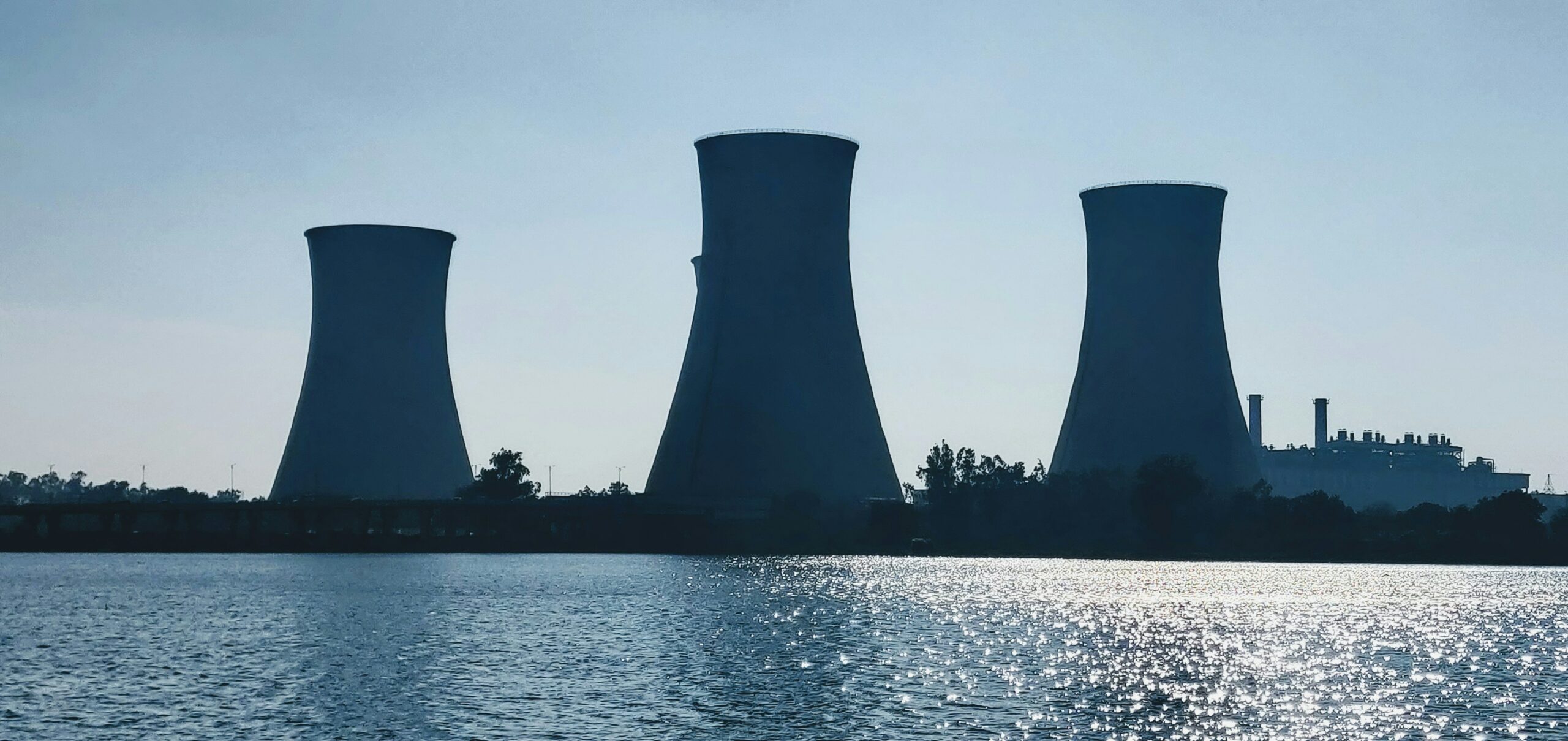 Nuclear Energy Should Help Pave the Way for a Renewable Energy Future
Nuclear Energy Should Help Pave the Way for a Renewable Energy Future
By: Jack Sundermann
Demand for electricity varies greatly from day to day or even hour to hour.[1] The amount of electricity consumed on a hot summer day can be multiple times greater than the amount consumed at night on a cool summer evening.[2] Baseload plants provide the minimum amount of power that is always in demand.[3] Traditionally, baseload demand has been met by fossil fuel plants that burn coal or natural gas.[4] Modern nuclear power plants can provide a carbon-free alternative to coal or natural gas fired baseload plants.[5]
Contemporary Baseload Generation
Nuclear energy should not only remain part of the overall energy portfolio of the United States but also be expanded with the construction of new-generation nuclear reactors. Nuclear reactors can provide the benefits of baseline electrical load generation seen in gas fired or coal plants without the air pollution those fuel sources generate.[6] Baseline electrical generation provides 24/7 power to the grid to meet the base energy needs to the United States.[7] Additionally, as nuclear generation technologies advance, modern reactors produce increasingly less waste and are exceedingly safer than their older generation’s counterparts.[8] The expense of nuclear reactors should be considered carefully, but spending more money now to lessen the impact of climate change could save money in the long run.[9]
An inability to produce baseline energy has always been one of the main criticisms leveled at the renewable energy industry.[10] With modern battery and distributed generation systems that issue is becoming a thing of the past.[11] There may be times when baseline generation is needed to ensure support for everyone on the grid.[12] Traditionally, baseline needs have been met with fossil fuel powered plants, despite all the pollution that they emit.[13] Expanding the nuclear energy sector will allow for any baseline needs to be met without the air pollution generated from coal and gas plants.[14]
While storage of waste from nuclear plants continues to pose a problem for regulators, it is not an insurmountable task. Sites like Yucca Mountain have been proposed as a storage location.[15] The greatest challenge for a single storage site is convincing local governments to comply with having a waste site near their communities.[16] Today, most spent fuel rods are stored in dry casks or “spent fuel pools” within the ground of the generating facility.[17] Additionally, technological advancements allow new reactors to produce far less waste than old reactors.[18] As nuclear waste shrinks, its storage concerns shrink, too. The waste from nuclear generation is hazardous but containable; the same cannot be said for coal and gas. [19]
New-Generation Nuclear Reactors
New generation facilities can also reduce or completely eliminate near meltdown events like Chernobyl, Fukushima, and Three Mile Island.[20] The Fukushima event occurred after an abnormal earthquake and subsequent tsunami that severely damaged the facility.[21] With that event in mind, existing nuclear sites can better withstand disasters, and future sites should be placed in areas away from the coast or fault lines to mitigate potential “acts of god.”
The human error involved with the events in Chernobyl and Three Mile Island can also be mitigated using new technology.[22] New generation reactors have a comparatively lower power output than older generation reactors.[23] Because of low power and passive cooling systems, core meltdowns at these facilities are next to impossible.[24] Scientists and engineers have studied the causes of nuclear events extensively and considered them in the designs of the new systems.[25] Consequently, modern designs are now far safer than the facilities at Chernobyl and Three Mile.[26]
Continuing to develop nuclear technology and expanding the sector will mean more research and technological breakthroughs can occur. Modern nuclear reactors produce far less waste and produce electricity more efficiently than the reactors of old.[27] Continued technological advancement could even lead to a new nuclear fuel source becoming feasible that doesn’t pose the same radioactive hazard, such as Thorium, which is not a radioactive hazard.[28] While not a reality yet, if the federal government could create a larger market for the industry, research into new technologies associated with it will follow.
__________
[1] Tony Dutzik, Do We Really Need Nuclear Power for “Baseload” Electricity?, Frontier Group, https://frontiergroup.org/articles/do-we-really-need-nuclear-power-baseload-electricity/ (Mar. 29, 2011).
[2] Id.
[3] Id.
[4] Nat’l Electrical Mfrs. Ass’n, Baseload Generation, https://energytransition.nema.org/baseload-generation/.
[5] Id.
[6] Id.
[7] Id.
[8] Helmuth Boeck, Why Nuclear Power is Safer Than Ever, https://www.gisreportsonline.com/r/nuclear-energy-safe/ (Feb. 1, 2022).
[9] Kenneth Gillingham, For Deep Greenhouse Gas Emission Reductions, A Long-Term Perspective on Costs is Essential, https://www.elibrary.imf.org/downloadpdf/view/journals/022/0056/004/article-A004-en.pdf (Dec. 6, 2019).
[10] Kevin Steinberger, Debunking Three Myths About “Baseload”, Nat. Res. Def. Couns, https://www.nrdc.org/bio/kevin-steinberger/debunking-three-myths-about-baseload
[11] Id.
[12] Id.
[13] Id.
[14] Id.
[15] Nev. Att’y Gen. Office, The Fight Against Yucca Mountain, https://ag.nv.gov/Hot_Topics/Issue/Yucca/ (last visited Mar. 8, 2023).
[16] Martina Igini, The Nuclear Waste Disposal Dilemma, https://earth.org/nuclear-waste-disposal/ (Sep. 12, 2022).
[17] U.S. Nuclear Regul. Comm’n, Backgrounder on Radioactive Waste, https://www.nrc.gov/reading-rm/doc-collections/fact-sheets/radwaste.html (last updated Jan. 26, 2024).
[18] Boeck, supra note 8.
[19] Earth Justice, Carbon Capture: The Fossil Fuel Industry’s False Climate Solution, https://earthjustice.org/article/carbon-capture-the-fossil-fuel-industrys-false-climate-solution (Sep. 19, 2023).
[20] Id.
[21] World Nuclear Assoc., Fukashima Daiichi Accident, https://world-nuclear.org/information-library/safety-and-security/safety-of-plants/fukushima-daiichi-accident.aspx (last updated Aug. 2023)
[22] Boeck, supra note 8.
[23] Id.
[24] Id.
[25] Id.
[26] Id.
[27] Id.
[28] Artem Vlasov, Thorium’s Long-Term Potential in Nuclear Energy: New IAEA Analysis, Int’l Atomic Energy Agency, https://www.iaea.org/newscenter/news/thoriums-long-term-potential-in-nuclear-energy-new-iaea-analysis (Mar. 13, 2023).
Photo Courtesy of Ajay Pal Singh Atwal

